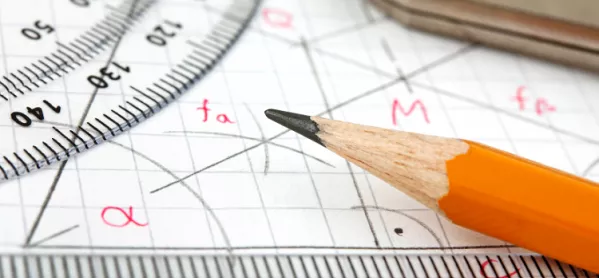The performance of pupils in maths in the GCSE national reference test improved on last year, Ofqual revealed today.
The exams watchdog said that there had been a “statistically significant change”, which suggested that pupil performance in maths had improved slightly.
The national test is used to help gauge the standards of pupils’ work to help set grade boundaries for exams.
However, these national reference test scores were not used to help set the 2018 results, as Ofqual said any improvement in standards was likely to be down to teachers “increased familiarity with new GCSEs”.
Ofqual said the national reference test for 2018 showed increases in the number of pupils who would be expected to achieve grade 7, grade 5 and grade 4 at GCSE maths.
Teachers ‘more familiar with new GCSEs’
In a report, it said: “This is not surprising, as we might expect to see an improvement in performance in the first years, as teachers get more familiar with the requirements of the new GCSEs.”
The report also showed that there were fewer students who would be expected to achieve a grade 5 and grade 4 in English but said that the difference between 2017 and 2018 was not statistically significant so it could not be sure there had been a real change.
The national reference test (NRT) was introduced in 2017 to provide extra information to help the awarding of GCSEs. It was sat for the second time in the spring of 2018.
The test was designed to provide evidence on changes in performance standards over time in English language and mathematics in England at the end of Year 11. It is currently run by the National Foundation for Educational Research under a contract with Ofqual.
Each year, a random sample of around 350 schools are selected and 60 pupils at each school take a test booklet in maths or English (30 for each subject).
The Year 11 pupils take the test in late February or early March, before they take their GCSEs in May and June. The results are analysed at a national level, with no results published for individual schools or pupils.
The purpose of the test is to indicate the percentage of students who are predicted to achieve at least a grade 4, a grade 5 or a grade 7 in their GCSEs. The tests will show if these percentages change from year to year, and if they do change, it could be taken into account when GCSEs are being awarded.
The idea behind the test is to provide an independent gauge of whether there have been genuine improvements in pupil performance that would justify an increase in the GCSE pass rate nationally.
However, 2018‘s NRT results were not used to set grades for this year’s GCSEs.




